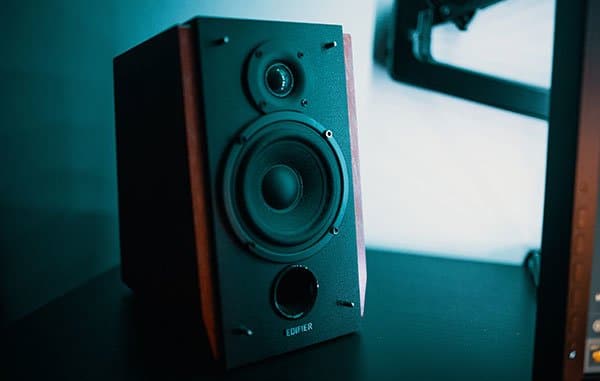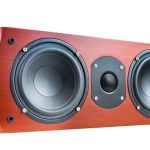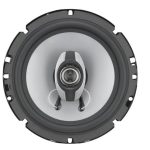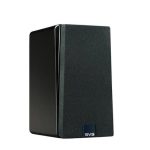A car stereo system or a home audio system reproduces sound comprising of different frequencies, including low frequencies, midrange frequencies, and high frequencies. Low frequencies are the deepest sound notes you hear from audio. Low frequencies are commonly known as bass. Basically, midbass is the frequency range between lower midrange and upper bass. Midrange frequencies range from 300 Hz to 3,000 Hz whereas bass frequencies range 20 Hz to 1,000 Hz. In this regard, midbass frequency ranges between 140 Hz to 400 Hz.
Why is midbass important?
While most music lovers tend to only consider bass, midrange, and highs, midbass is equally important. You can only enjoy the completeness of music when your speakers and audio system are properly tuned to reproduce all frequencies, including midbass. Leaving out some frequencies at the expense of others will result in missing out on important audio details.
Midbass is an integral part of sound reproduction. It mainly covers audio tones produced by orchestral instruments. Orchestral instruments include cellos, trumpets, bass trombones, bass drums, bassoons, and French horns among others. Besides the tones produced by orchestral instruments, midbass also covers a male voice. A typical male voice is also categorized as midbass when either speaking or singing.
If your audio system has little midbass, then you’ll lose crucial tones within the midbass range and you’ll notice that the audio is lacking some depth. However, if you have excessive midbass in your audio system, then you’ll end up getting muddy sound. This is where clarity comes in. The kind of midbass you have in your audio system will determine the audio clarity.
What is the relationship between midbass and sound clarity?
Enhanced midbass response results in enhanced sound clarity. If you’re able to set up your speakers to get awesome midbass, then you’ll get sound reproduction with the right depth and less muddy effects. This results in better clarity. Basically, aftermarket speakers have the potential of making a huge difference in midbass frequency response. As a result, most car owners replace factory speakers with aftermarket speakers with the aim of enhancing the accuracy and clarity of the sound system.
Aftermarket speakers have the ability to reproduce more powerful sound than factory speakers. However, most car owners fail to take the necessary measures to protect the advantages that come with aftermarket speakers. Much of the performance in midbass is lost as a result of poor speaker mounting and vibrations. Most door panels are made of a thin metallic sheet in both the exterior and interior door structure. The thin metallic panels are prone to vibrations. These vibrations work against the capabilities of a speaker in reproducing accurate midbass.
Door panels also have large holes in their inner metallic structure. Once a speaker is installed on the door, the holes within the interior door structure allow sound production from the rear of the car speaker to get canceled with the front sound production. This problem reduces the overall midbass reproduction, and this results in poor sound clarity.
With that said, here’s how to get awesome midbass out of your speakers:
Installing Sound Deadening Material
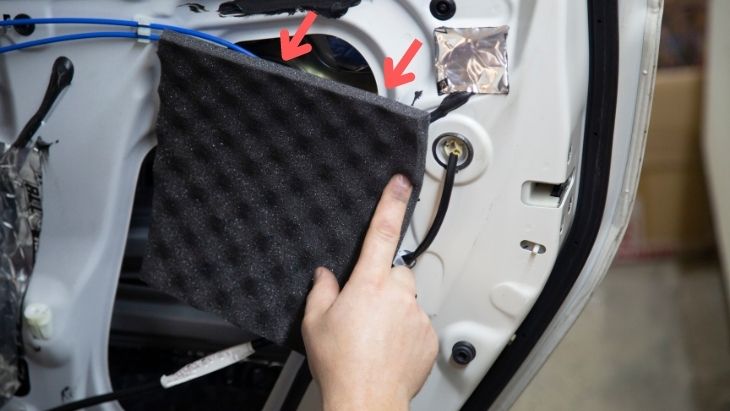
Car speakers are mainly installed on the doors. Car doors comprise of a metallic structure, with panels on the inner and outer surface. The panels tend to vibrate when the car is moving due to road vibrations, engine vibrations, and vibrations from a powerful speaker. The vibrations of the panels make them rattle. The rattling noise interferes with sound clarity and midbass response. This makes car doors less ideal for the best acoustic performance. At the same time, car doors are the most readily available space to install car speakers. So what’s the solution to this problem? It’s simple. The best solution is to install sound deadeners on the car doors.
Sound deadeners work by creating a more solid baffle on the car door to improve the acoustic performance of a speaker, thereby enhancing midbass reproduction. The sound deadeners also reduce resonance that causes distortion. Sound deadeners lower the noise within the door panels, thereby making the speakers sound clearer with high-quality midbass. Sound deadeners work by strengthening the door panels, thereby reducing the vibrations that detract midbass response.
You should use high-quality sound deadening materials for the best results. One of the areas to apply the damping material is on the outer panel of the door. Apply the sound deadener on the inside surface of the outer door panel. Do this on all the doors where you’ll be installing the speakers. There’re several types of sound deadeners you can use. It’s best using sound-deadening mats for the doors. You can the mat into fitting strips that match the shape and size of the panel for a perfect fit on the inner surface. Before applying the mats, clean the surface of the panel with isopropyl alcohol. Doing so will allow the mat to adhere properly to the metallic panel. When applying the mat, press it from top to bottom of the interior surface of the outer panel. Do the same for the inner door panel.
Besides damping the door panels, you should also seal the holes on the panels with deadeners. For the holes, use rigid but thin material. Materials such as plastic or aluminum sheets would be most ideal for covering the holes. Make some plates that will fit in all the holes. Cover them from the inner side of the door panel. Use foam tape to keep the covers in place. Securing them with foam tape will make it easier to remove them to access the internal door mechanisms in the future. Sealing the holes ensures that the sound coming from the back of the speaker is isolated from the sound coming from the front of the speaker, thereby reducing midbass frequency cancellation.
The outer plastic door panel that comes with most cars can also vibrate against the exterior metallic door panel. You can prevent such vibrations and noise by applying a thin layer of a sound deadener between the outer surface of the metallic panel and the interior surface of the plastic panel. In this case, use foam material for its thin enough yet effective. You can even use foam spray for the thinnest foam layer.
Installing Gasket Rings and Spacers on Each Car Speaker
Although applying sound deadening material on the car doors assist in getting awesome midbass out of car speakers, there’s still a lot more to be done. Mounting speakers on the doors lead to some midbass output being lost between the trim panel and the door itself. The solution to this problem is by installing gasket rings and spacers between the speaker and the door panel.
For this solution to work best, you need a gasket ring, spacers, coupling ring, and a rear wave absorption panel for each door speaker. The coupling ring usually comes into contact with the trim panel of the door and surrounds the car speaker. It redirects the sound coming from the speaker towards the car cabin instead of bouncing and echoing within the door. The spacer works by creating a tight seal between the speaker and gaskets. The tight seal prevents air from leaking, thereby allowing for tighter and louder midbass from the speakers. The rear wave absorption panels work by absorbing back wave reflections from the back of the speaker, thereby reducing distortion and coloration of midbass.
Subwoofer Considerations
A car subwoofer can impact heavily on the kind of midbass you’ll get from your speakers. Some music enthusiasts argue that they enjoy better midbass from their speakers upon turning off the subwoofers while others claim they enjoy better midbass with the subwoofers turned on. However, what they don’t actually know is that the best midbass is only realized when the subwoofer is properly equalized. You may turn down the subwoofer volume in case it’s overpowering midbass from your speakers. This way, you’ll enjoy both bass and midbass simultaneously.
Adding a Crossover
The kind of midbass you get from your speakers is determined by the frequencies that are sent to each driver. With proper stereo system settings, you can determine the drivers or channels that get fed with certain frequencies. This is where a crossover comes in. A crossover works by filtering audio frequencies. If your car stereo system doesn’t have one, then you can invest in a new crossover or an aftermarket head unit with an inbuilt crossover. You’ll then set the crossover to filter high and low frequencies and only allow midbass frequencies to drive certain channels. This way, you can set the front speakers to reproduce highs and lows, and set the back speakers to reproduce midbass. Alternatively, you can set the right channel speakers to reproduce midbass and the left channel speakers to reproduce highs and lows.
Upgrading the Amplifier
If you’ve just upgraded your car stereo with powerful speakers and you’re missing out on midbass, then it’s likely that the speakers are not getting enough power from the head unit. In this case, adding a car amplifier will make a huge difference on the kind of midbass you’ll get from your speakers. An amplifier works by amplifying the sound signals from the receiver and outputs stronger signals that can feed the speakers with enough power. When the speakers are fed with enough power, they will sound right with enhanced clarity and midbass. However, avoid overpowering the speakers as this can cause distortion and destroy the quality of midbass. The right thing to do is feeding the speakers with enough power.
Final Thoughts
The kind of midbass you get from your sound system is largely determined by how you install the speakers. In this regard, the environment that the speakers are being installed will affect the kind of midbass you’ll get. If you’ve been wondering how to get awesome midbass out of your speakers, you’ve now learnt that what you should do. Simply feed the speakers with enough power, get a crossover, and add sound deadening material on the door panels, and include gaskets and spacers when installing the speakers. Without following these tips, you won’t get great midbass even with the best speakers.
Michael Evanchuk is a San Francisco-based sound engineer with 20 years’ experience installing, troubleshooting, and repairing commercial, automotive, and household sound equipment. Evanchuk owns an auto stereo center, where he offers highly competitive car audio installation and repair services. He has written dozens of articles on different sound engineering topics, all of which have been published in leading journals, blogs, and websites.

